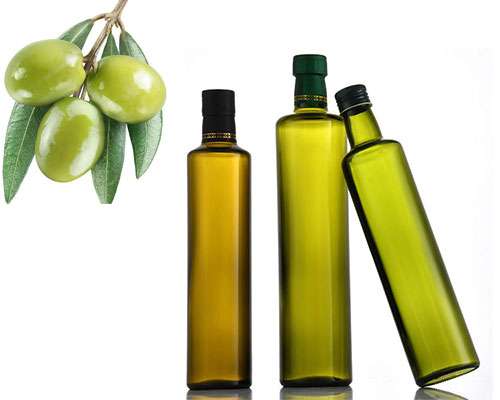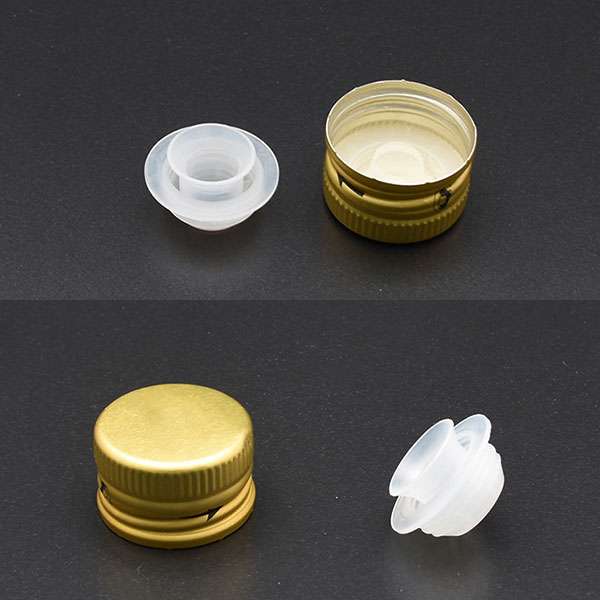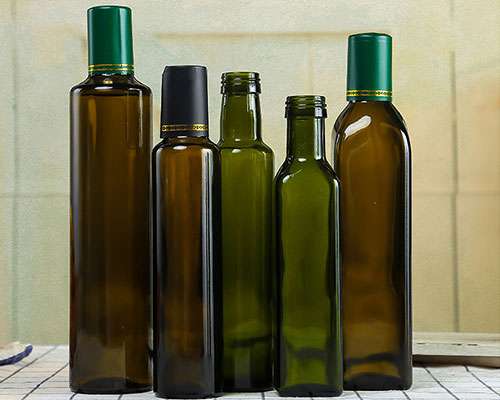
Olive oil is a very healthy edible oil. This oil is absorbed slowly and can withstand high temperatures, so it is often called an “antioxidant.” Olive oil is rich in ingredients that give it various benefits and effects. As people pay more attention to healthy eating, olive oil has become a must-have in people’s daily lives. Glass olive oil bottles are gradually becoming an important and growing part of the packaging market.
The olive oil produced in the factory is filled into certain containers and transported to consumers for consumption. Due to varieties and grades, olive oil is generally packaged in containers. They use different materials such as glass, metal, and plastic. The selection of packaging materials mainly considers factors such as light protection and oxygen protection, recycling and reuse, mechanical resistance and inert gas protection, and production costs.
Olive Oil Packaging Requirements
People are often concerned about the glass bottles’ size, weight, and shape. The packaging of olive oil is sold in retail outlets and supermarkets. They are different from that used in the restaurant and catering industry. Set basic requirements for olive oil packaging based on consumer needs.
1) Safe Storage
The olive oil bottles protect every aspect of storage, transportation, distribution, final sales, and user use. First, prevent contamination from impurities, such as moisture, oxygen, odors, smoke, dust, microorganisms, and other substances. Secondly, prevent solvents, additives, and other monomers and degradation products from direct contact with olive oil. Third, avoid light to prevent accelerated photo-oxidation. Finally, the container must be counterfeit-proof and tamper-proof. This ensures the origin and authenticity of the olive oil.
2) Convenience
Glass olive oil bottles must meet the “functions” of being easy to carry, open, not dripping oil when pouring oil, and easy to re-close. The size of the glass bottle must meet consumer needs.
3) Product Information
Some packages with unique brands and logos are helpful for customers to choose first in supermarkets. On the one hand, when olive oil is preferred, consumers can easily read the nutrition, origin, best-before-consumption date, certification mark, and other important information on the glass olive oil bottle. On the other hand, olive oil packaging is available for consumers to choose from, such as capacity, color, bottle mouth, material, olive oil information, trademark, and other intuitive conditions.
4) Environmental Protection
The sustainable development of packaging mainly refers to the degree of impact that packaging may have on the environment. Olive oil glass bottle packaging materials are good for environmental protection. They reduce pollution, and can even recycle old glass bottles. These are related to future social development.
Comparison Of Olive Oil Bottle Materials
The main factor in choosing packaging materials is contact with olive oil, which is related to whether it affects quality and safety. The most appropriate packaging material must be considered environmental conditions and shelf life requirements. The preference of consumer groups for packaging materials is also important. Research shows that people prefer dark-colored glass bottles for packaging over plastic. In any case, dark glass material packaging bottles are beneficial to preventing photo-oxidation and plasticizer pollution in plastic bottles.
1) Glass Olive Oil Bottles

By observing spectral changes, blue and green glass bottles, or transparent, have no obvious effect in filtering ultraviolet light. The dark blue glass bottle can effectively filter and have a low protection effect on oil. The Colors are similar to olive green and dark green, with slightly better performance. Dark green and amber glass olive oil bottles have the best light-proof effect. The thickness of the glass wall has less impact on light protection.
Glass bottles can block moisture and oxygen in the air and avoid harmful effects on grease. However, light passing through the transparent bottle can easily promote oxidation. Glass with a high absorption capacity in the ultraviolet range protects olive oil well against oxidation. From an environmental perspective, glass bottles are recycled and reprocessed properly, making glass containers an almost ideal material.
The gas barrier function of glass is good. However, attention should be paid to sealing, as there is a certain risk of oxygen penetration. And the brittleness and higher weight present problems when handling and carrying it. As an oil container, glass bottles have certain requirements for temperature control in all aspects. These shortcomings should be strictly controlled as critical control points during transportation and storage.
2) Plastic Packaging
Although plastic is a relatively new material for olive oil packaging edible oils and has a lower price, lighter weight, and other advantages over glass olive oil bottles, it is rarely used for olive oil. It does not have the light-proof and oxygen-blocking effects like glass. The shelf life is relatively low. Moreover, the main disadvantages of plastic materials are aging, pollution, oxygen permeability, and light transmission. Waste plastic oil bottles can be recycled for other uses, but cannot be reused as olive oil filling and packaging containers.
3) Metal Material
Metal containers are light in weight, have good mechanical strength, and can block light and oxygen. Its interior is coated with a food-grade anti-corrosion protection layer. Although metal containers can be recycled, corrosion of the internal coating limits their reuse.

Olive Oil Glass Bottle Capping
Glass Olive Oil Bottles are capped and sealed, requiring tight sealing performance on the bottle mouth. Other features include tamper-evident sealing. It is a device that consumers will easily determine whether a bottle has been opened without authorization. Make sure there is no possibility of refilling containers. The airtight sealing effect of the bottle cap is the degree of contact closure between the bottle cap and the bottle mouth. The cap and mouth of the olive oil glass bottle are tightly compressed to provide a safe and tight fixation.
Summarize
In general, the following points need to be paid attention to when packaging olive oil. Capacity to meet market demands, materials to ensure oil quality, airtightness to avoid oxidative contamination, temperature resistance, and chemical stability. The design of glass bottles needs to be comprehensively considered, not only the main packaging material, shape, practicality, and environmental protection factors but also the aesthetics of the appearance. To meet the needs of the market and consumers. Olive oil bottles made of different materials have their advantages and disadvantages. They should be selected according to the specific situation.

Taibo Glass Factory provides safe and healthy Olive Oil Glass Bottle Packaging. Our factory is located in Xuzhou, China, with decades of production experience and constantly updated technical equipment. The series of Glass Olive Oil Bottles we produce are practical but also safe. We have sufficient inventory and can ship in time. As a professional glass bottle manufacturer, we accept olive oil packaging designs, including appearance, capacity, color, logo, and other designs. We pay attention to product quality but also provide a sincere service attitude. Contact us and we will reply to you within 24 hours.
